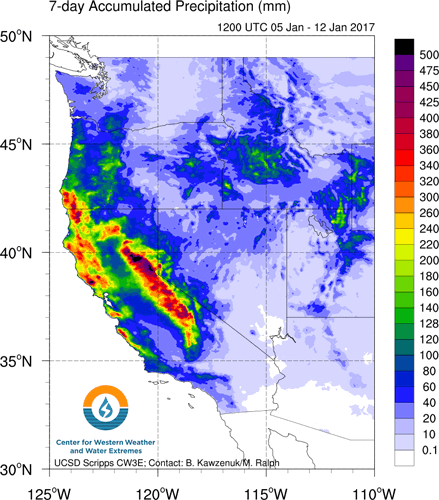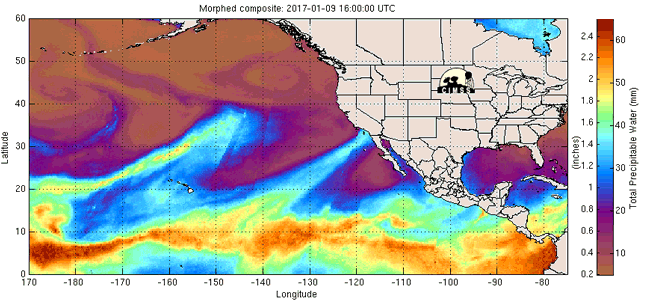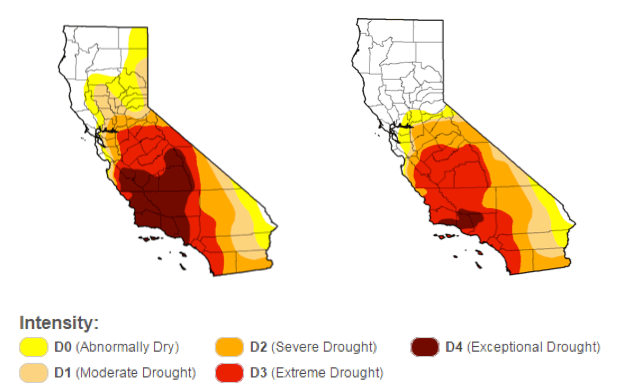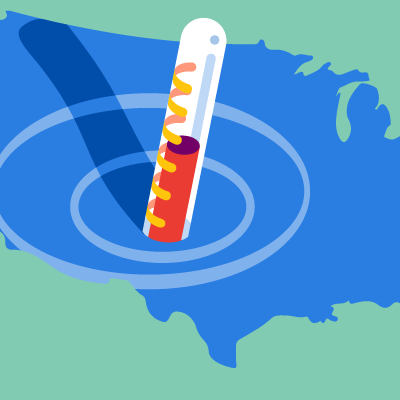We’ve had a lot to say about U.S. floods in the last year due to severe floods in the Midwest last January, widespread flooding in the South in March, in Texas in April and again in July, and catastrophic floods in Louisiana in September. Floods are truly ubiquitous. It is a peril that is increasingly top of mind, perhaps especially so as FEMA turns to the private reinsurance market to strengthen the solvency of the NFIP.
Most recently, the western coast of the U.S. has been pummeled by a series of powerful storms that brought significant amounts of precipitation in the form of heavy snow and pounding rain to areas in California and Nevada. In some areas, including in major population centers on the West Coast and throughout the mountainous Sierra Nevada region, more than 400 mm (15.75 inches) of precipitation have fallen in the last week.

The source of this extreme precipitation is an atmospheric river—a relatively narrow area in the atmosphere that transports vast quantities of water vapor to regions outside of the tropics—that has broken off from the normal circulation pattern of the jet stream, carrying vast amounts of warm, wet air into California. The atmospheric river responsible for these storms stretches all the way from Hawaii into Nevada. Known as a “Pineapple Express” in this part of the world because of its origin near Hawaii, the phenomenon can transport amounts of water vapor between 7.5–15 times the average flow of water at the mouth of the Mississippi River, according to NOAA's Earth System Research Laboratory.

So far, this series of storms has swelled many rivers to heights not seen since 2005, causing localized flooding of hundreds of homes and at least one large industrial area.
- Evacuation was recommended for residents of low-lying areas of Guerneville and Monte Rio due to flooding from the Sacramento River
- In the town of Wilton, residents were evacuated due to floods on the Cosumnes River
- In Sonoma County, the Russian River is expected to flood more than 550 homes and businesses
- In Nevada, a state of emergency has been declared and some residents voluntarily evacuated at least 400 homes due to floods on the Truckee River
- The flood gates of the Sacramento Weir on the Sacramento River were opened for the first time in more than 10 years to divert water through the Sacramento and Yolo bypasses in an effort to alleviate some of the flooding
- Numerous roadways and travel conditions remain hazardous across much of the area impacted by heavy precipitation
- To date, five people have died as a result of the flooding in California
Farther inland, in the mountains, these storms have dumped feet of snow in colder areas at higher altitudes of the Sierra Nevada Mountains—like Mammoth Mountain. The storms have helped alleviate California’s multi-year drought by doubling the portion of the state that is drought free, which increased from 18% to 34% in the past week, according to the U.S. Drought Monitor.

Additional storms are expected in the days and weeks ahead. The next atmospheric river is expected to be somewhat colder than the one that occurred from January 8–10. It should also deliver more snow to California’s mountains, which will help further reduce drought conditions when the snow melts in the spring. With more water on the way, how much more moisture is in store for California remains to be seen. AIR will continue to monitor the situation and respond if these wet winter storms develop into a significant flood event.



